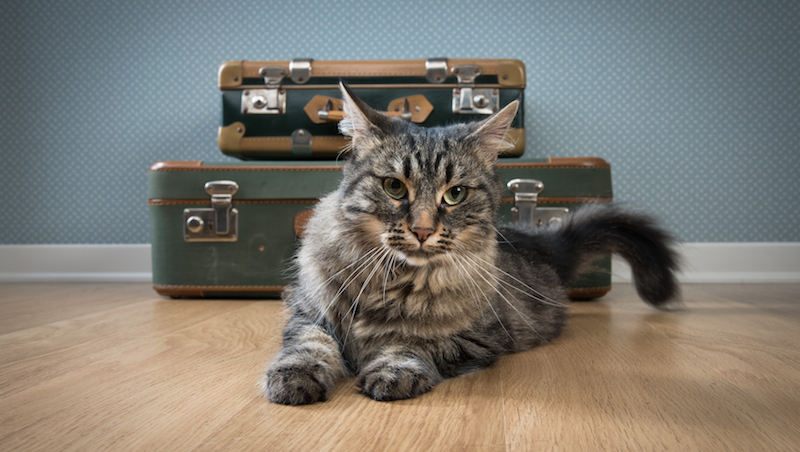Cats are generally docile, and don’t mind extended periods of rest and napping, so it should be a breeze traveling with a cat, but if unprepared, even house cat that is otherwise perfectly pleasant can be a nightmare to deal with on the road, and have a terrible time traveling.
Generally, it is recommended that cats are not made to travel, as they are creatures of habit, and any change in their environment or routine can be stressful and even traumatic, so unless you absolutely have to take your cat with you, it is best to have someone take care of your cat while you are away on vacation or business trip.
If traveling by car, it is important to have a comfortable carrier in which your cat can easily move, and stretch. Ideally, there should be some sort of padding or material covering the floor of the carrier to help make the trip less inconvenient. The carrier should be well secured in the car; most often this is done by using the car’s safety belt.
During a car trip, it will be necessary to stop in order to allow your cat to stretch its legs, and have a drink of water, and perhaps a little snack. You should never let your cat out of the carrier while the car is in motion as it can result in a dangerous situation and even an accident. Since you will have to allow your cat to leave the car to relieve herself, it is important to bring along a harness and leash to make the pit stops safe, and not have them turn into a foot chase. If you want to avoid the possibility of your cat getting lose altogether, then you can make use of disposable (single-use) litter boxes, and allow your cat to relieve herself inside the car.
When you arrive at your destination, or if you stay at a hotel at some point during your travels, make sure that the new environment is free of hazards for your cat, especially small openings that she might be able to get into and become stuck.
I you are the staying at a rental property or at a friend’s house, the easiest option would be to have your cat restricted to one room of the house—the room should ideally be the one in which you will be making your sleeping quarters, as it will have your scent which will bring a semblance of familiarity to an otherwise unfamiliar environment.
If traveling by plane the two most important things are to check with the airline to make sure that they allow pets (either in the cabin or in the cargo hold) and that your pet carrier is appropriate and approved for air travel.
Don’t worry about entertaining your cat during the flight, the less they are exposed to the world outside of the carrier the better. The carrier should have a cloth or tight mesh window so that the cat cannot see what is going on outside of it. This will reduce the level of stress for your cat.
It is also highly recommended that you do not feed your cat 8-12 hours before the start of your flight. It will reduce the chance of your pet having a accident while traveling, and also reduce the need for them to have to hold their urine.
it is a good idea to check with your veterinarian, and get recommendations and suggestions from her for traveling with your cat. In some cases a sedative or other form of medication may be recommended in order to make the trip less stressful for both you and your cat.

